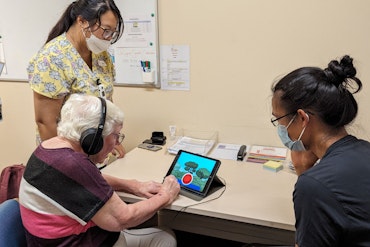What can Australia expect from the on-site aged care pharmacist model?
Ahead of the national roll-out, the results are already rolling in!
![<p>On-site pharmacists will regularly review medications — offering residents and their families more confidence in their care. [Source: Shutterstock]</p>](https://agedcareguide-assets.imgix.net/news/articles/wp/Pharmaaged__3010.jpg?fm=pjpg&format=auto&w=550&q=65)
On-site pharmacists will regularly review medications — offering residents and their families more confidence in their care. [Source: Shutterstock]
Key points:
- Interviews were conducted with 15 pharmacists from across Australia who were early adopters of the embedded on-site aged care pharmacist model
- The national roll-out of an embedded pharmacist model was in response to recommendations from the 2019 Royal Commission into Aged Care Quality and Safety
- The Australian Government announced $345.7 million in funding would go towards the national roll-out from 2023 – 2027
Details of the embedded on-site pharmacist model are yet to be finalised, but it is anticipated that the phased roll-out of this new workforce model will commence in 2024, following its announcement in 2022.
Monash University researchers interviewed 15 early adopters of the on-site pharmacist model and found that it yielded greater opportunities to support resident and system-level improvements in the quality use of medications.
The new study, by the Centre for Medicine Use and Safety at the Monash Institute of Pharmaceutical Sciences and published in the Australasian Journal on Ageing, set out to explore the roles of early adopters in supporting quality use of medications in residential facilities.
Lead author Dr Amanda Cross, a pharmacist and research fellow at CMUS, said that the roll-out appeared to be an important step forward for Australia’s residential aged care sector.
“It was evident from the early adopters of this model that being embedded and on-site was important for being able to be an advocate for the resident, build enhanced relationships with the interdisciplinary team and drive system-level improvements in medication management,” Dr Cross said.
System-level roles, such as leading clinical governance and quality improvement processes, were consistent with that of a ‘knowledge broker’ — an individual who helps to move evidence and guidelines into local practice.
“This system-level knowledge broker role can serve as a framework to help guide the new aged care pharmacist model. Pharmacists acting as knowledge brokers can help to improve policies and processes, link key stakeholders and build the capacity of individuals and the aged care provider organisations to support quality use of medications,” Dr Cross explained.
Knowledge brokers work to address an over-reliance on psychotropic medications, which has been highlighted as needing immediate action by the Royal Commission into Aged Care Quality and Safety.
Previous Australian research suggested that over 60 percent of residents use psychotropic medications on a regular basis.
The Pharmaceutical Society of Australia report, Medicine Safety: Aged Care, highlights that more than 90 percent of residents experience one or more medication-related problems.
Older people living in long-term care homes may be at risk of physiological and cognitive decline, involving co-morbidities and the use of multiple medications. They take, on average, between nine to 11 regular medications.
The overlap of medications, known as ‘polypharmacy,’ is associated with an increased risk of medication-related problems, undesirable drug events and hospitalisations.
Pharmacists described resident-level interventions, stepping in and directly acting to ensure that they can act on potential risks immediately. Participants in the study saw this as a key difference between the embedded on-site role and the more limited opportunities provided within existing residential ‘medication-management review’ roles.
Dr Cross and colleagues at CMUS are currently working on two Medical Research Future Fund projects, offering insight into the future of residential care facilities.
Do you believe that medication management should play a greater role in aged care? Let the team at Talking Aged Care know if you believe the roll-out will improve Australia’s polypharmaceutical crisis and subscribe to the newsletter for more informative content!























